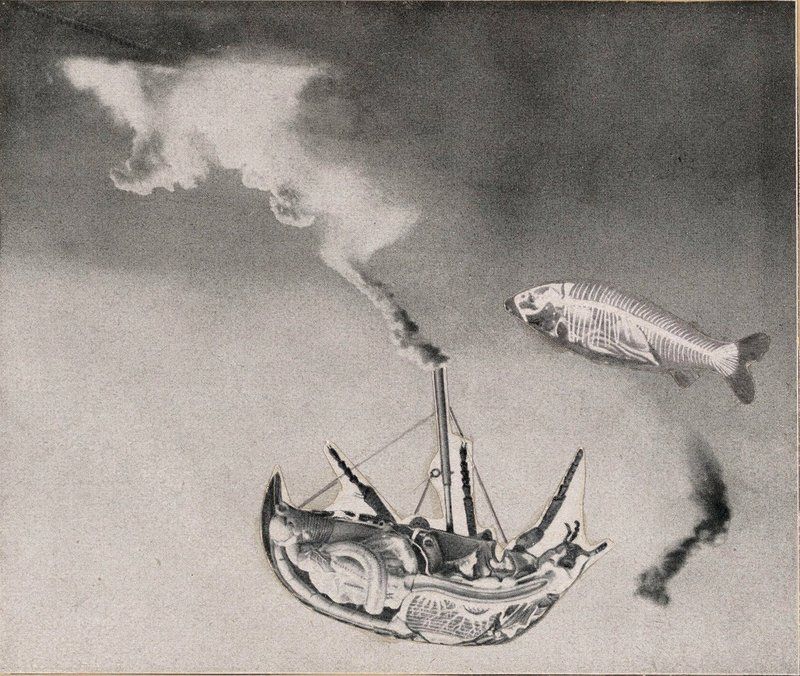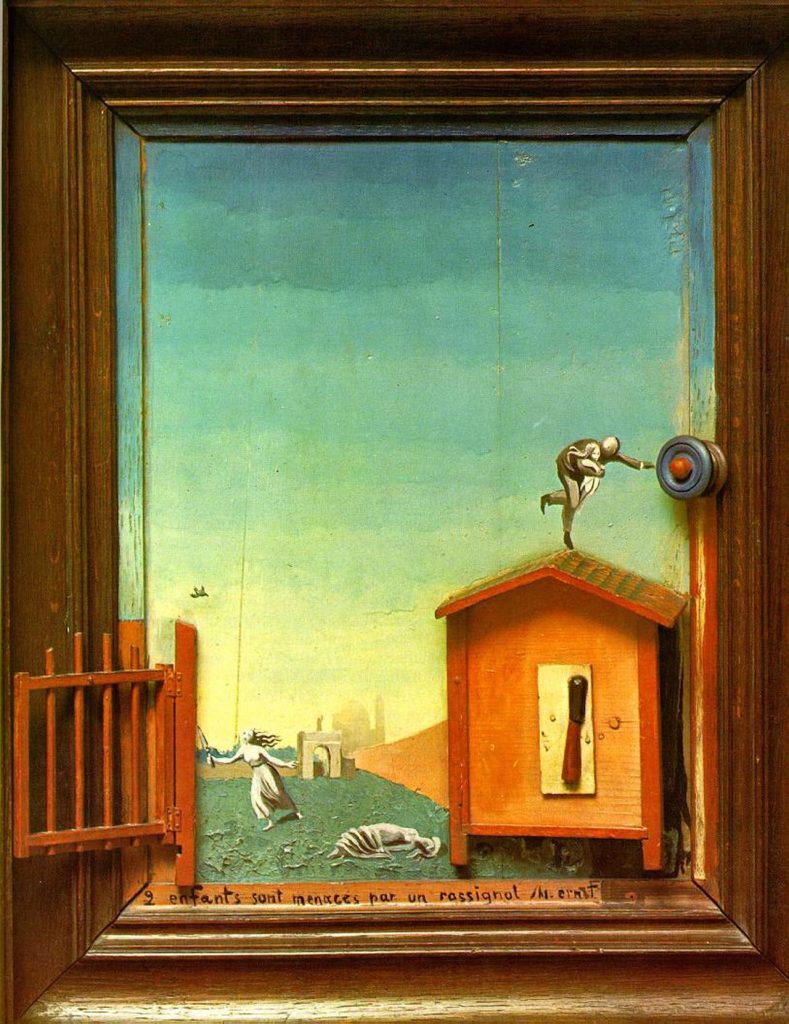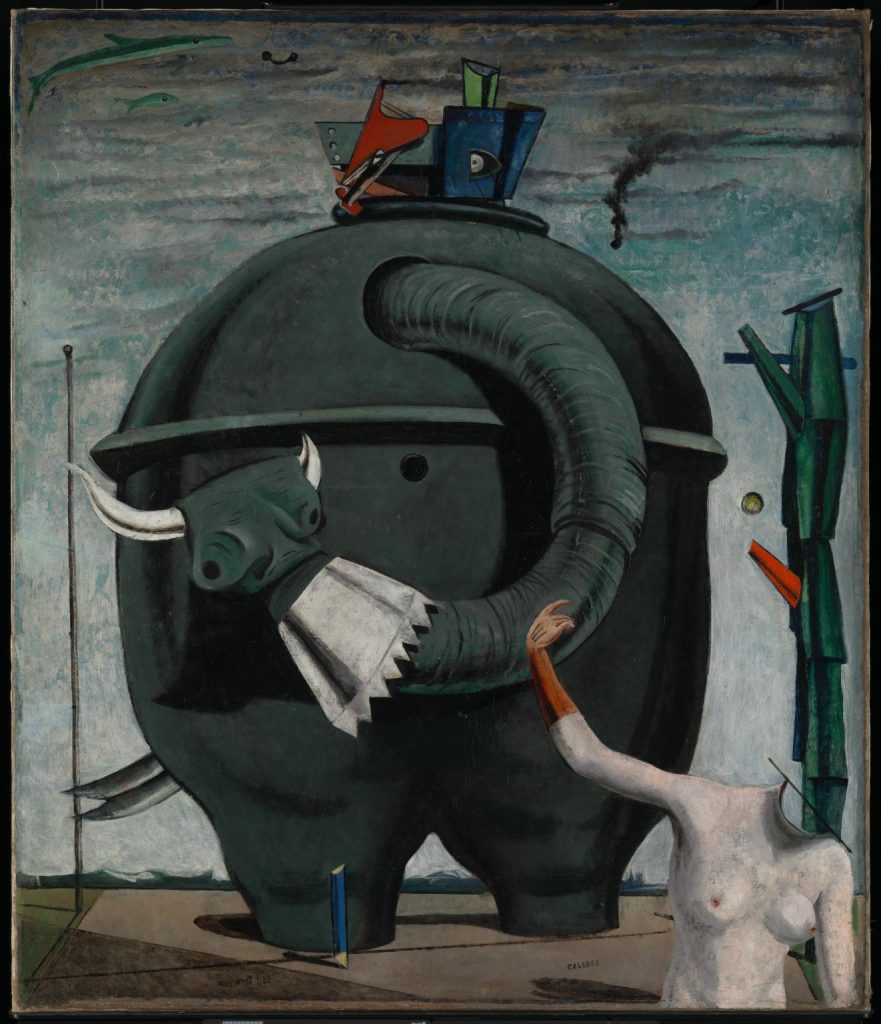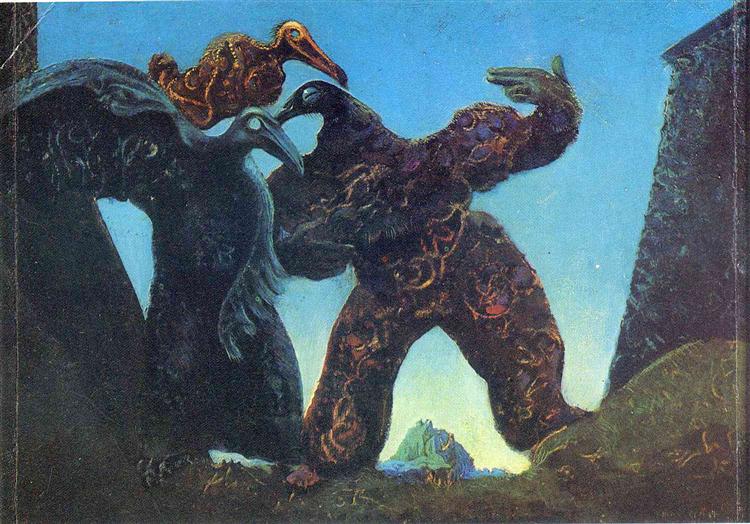
Max Ernst was more than just a prolific artist, he was a painter, sculptor, graphic artist, and poet. Ernst was also an artist with no formal training as well as a pioneer for dada and surrealism. Furthermore, Ernst invented the techniques of Frottage and Grattage. Constant themes of Ernst’s work includes the use of symbolic birds, The dream-scape, and painting from his subconscious.

The piece that demonstrates Ernst’s unique collaging style would be “Here Everything is Still Floating” (1920). The piece creates a coherent piece out of unrelated cutouts and ends up being a fun outlet for the insanity of WW1 to Ernst.

Ernst often paints with references to his own life. An example of this is “Two Children Are Threatened by a Nightingale” (1924). It seems quaint at first but becomes more terror inducing as you look more into it.

“Europe After the Rain II” (1940-42), depicts a futuristic apocalypse. It was also most likely based around the Spanish war and the beginnings of WW2. Executed well is the cluttered feeling of an aftermath of destruction.

The piece that I find most enjoyable is “Celebes” (1921). The piece takes a photograph of a vacuum cleaner and creates an imaginative dream-scape with it, and the headless nude that is with it.

Another one I enjoy would be “Barbarians Marching to the West” (1937). I enjoy the feeling of inevitability and two giant figures of the piece. The dream-scape used here is framed very constrained and the one “barbarian” leading left is very eye catching.
Sources:
